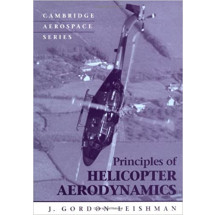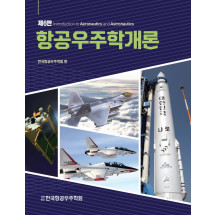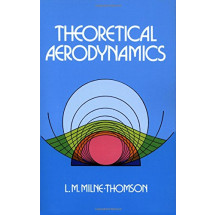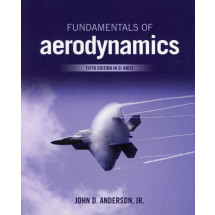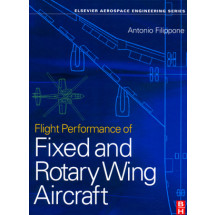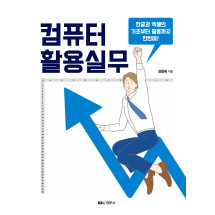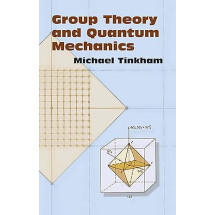About the Authors xiii
Series Preface xv
Preface xvii
Acknowledgements xxi
About the Companion Website xxiii
1 Introduction 1
1.1 Case Study: Supersonic Flight in the Bell XS-1 3
1.2 Types of Flight Testing 9
1.2.1 Scientific Research 9
1.2.2 Experimental Flight Test 12
1.2.3 Developmental Test and Evaluation 14
1.2.4 Operational Test and Evaluation 14
1.2.5 Airworthiness Certification 15
1.3 Objectives and Organization of this Book 17
Nomenclature 18
Acronyms and Abbreviations 19
References 19
2 The Flight Environment: Standard Atmosphere 22
2.1 Earth’s Atmosphere 23
2.2 Standard Atmosphere Model 24
2.2.1 Hydrostatics 24
2.2.2 Gravitational Acceleration and Altitude Definitions 25
2.2.3 Temperature 26
2.2.4 Viscosity 27
2.2.5 Pressure and Density 28
2.2.6 Operationalizing the Standard Atmosphere 29
2.2.7 Comparison with Experimental Data 30
2.3 Altitudes Used in Aviation 32
Nomenclature 34
Subscripts 34
Acronyms and Abbreviations 35
References 35
3 Aircraft and Flight Test Instrumentation 36
3.1 Traditional Cockpit Instruments 36
3.1.1 Gyroscopic-Based Instruments 38
3.1.2 Pressure-Based Instruments 38
3.1.3 Outside Air Temperature 41
3.1.4 Other Instrumentation 42
3.2 Glass Cockpit Instruments 42
3.3 Flight Test Instrumentation 45
3.3.1 Global Navigation Satellite System 46
3.3.2 Accelerometers 49
3.3.3 Gyroscopes 49
3.3.4 Magnetometers 50
3.3.5 Barometer 51
3.3.6 Fusion of Sensor Data Streams 51
3.4 Summary 52
Nomenclature 54
Subscripts 54
Acronyms and Abbreviations 54
References 55
4 Data Acquisition and Analysis 56
4.1 Temporal and Spectral Analysis 56
4.2 Filtering 61
4.3 Digital Sampling: Bit Depth Resolution and Sample Rate 63
4.4 Aliasing 66
4.5 Flight Testing Example 69
4.6 Summary 69
Nomenclature 70
Subscripts 70
Acronyms and Abbreviations 70
References 71
5 Uncertainty Analysis 72
5.1 Error Theory 73
5.1.1 Types of Errors 73
5.1.2 Statistics of Random Error 76
5.1.3 Sensitivity Analysis and Uncertainty Propagation 77
5.1.4 Overall Uncertainty Estimate 79
5.1.5 Chauvenet’s Criterion for Outliers 79
5.1.6 Monte Carlo Simulation 80
5.2 Basic Error Sources in Flight Testing 81
5.2.1 Uncertainty of Flight Test Instrumentation 81
5.2.2 Example: Uncertainty in Density (Traditional Approach) 85
5.2.3 Example: Uncertainty in True Airspeed (Monte Carlo Approach) 86
Nomenclature 88
Subscripts 89
Acronyms and Abbreviations 89
References 89
6 Flight Test Planning 90
6.1 Flight Test Process 90
6.2 Risk Management 93
6.3 Case Study: Accept No Unnecessary Risk 96
6.4 Individual Flight Planning 97
6.4.1 Flight Area and Airspace 98
6.4.2 Weather and NOTAMs 99
6.4.3 Weight and Balance 100
6.4.4 Airplane Pre-Flight 103
6.5 Conclusion 105
Nomenclature 105
Acronyms and Abbreviations 105
References 105
7 Drag Polar Measurement in Level Flight 107
7.1 Theory 107
7.1.1 Drag Polar and Power Required for Level Flight 107
7.1.2 The PIW–VIW Method 112
7.1.3 Internal Combustion Engine Performance 114
7.1.4 Propeller Performance 119
7.2 Flight Testing Procedures 124
7.3 Flight Test Example: Cirrus SR20 125
Nomenclature 127
Acronyms and Abbreviations 129
References 129
8 Airspeed Calibration 132
8.1 Theory 132
8.1.1 True Airspeed 134
8.1.2 Equivalent Airspeed 134
8.1.3 Calibrated Airspeed 135
8.1.4 Indicated Airspeed 137
8.1.5 Summary 137
8.2 Measurement Errors 138
8.2.1 Instrument Error 138
8.2.2 System Lag 138
8.2.3 Position Error 139
8.3 Airspeed Calibration Methods 142
8.3.1 Boom-Mounted Probes 143
8.3.2 Trailing Devices and Pacer Aircraft 143
8.3.3 Ground-Based Methods 145
8.3.4 Global Positioning System Method 145
8.4 Flight Testing Procedures 147
8.5 Flight Test Example: Cirrus SR20 148
Nomenclature 150
Subscripts 151
Acronyms and Abbreviations 151
References 151
9 Climb Performance and Level Acceleration to Measure Excess Power 153
9.1 Theory 153
9.1.1 Steady Climbs 154
9.1.2 Energy Methods 160
9.2 Flight Testing Procedures 165
9.2.1 Direct Measurement of Rate of Climb 165
9.2.2 Measurement of Level Acceleration 166
9.3 Data Analysis 167
9.4 Flight Test Example: Cirrus SR20 168
Nomenclature 172
Subscripts 173
Acronyms and Abbreviations 173
References 174
10 Glide Speed and Distance 175
10.1 Theory 176
10.1.1 Drag Polar 176
10.1.2 Gliding Flight 179
10.1.3 Glide Hodograph 180
10.1.4 Best Glide Condition 181
10.2 Flight Testing Procedures 183
10.3 Data Analysis 185
10.4 Flight Test Example: Cirrus SR20 186
Nomenclature 188
Subscripts 188
Acronyms and Abbreviations 189
References 189
11 Takeoff and Landing 190
11.1 Theory 190
11.1.1 Takeoff Ground Roll 191
11.1.2 Landing Ground Roll 193
11.1.3 Rotation Distance 194
11.1.4 Transition Distance 194
11.1.5 Climb Distance 195
11.1.6 Total Takeoff and Landing Distances 195
11.1.7 Simple Estimations 195
11.2 Measurement Methods 196
11.3 Flight Testing Procedures 197
11.3.1 Standard Flight Procedures 197
11.3.2 Flight Test Procedures 199
11.3.3 Data Acquisition 200
11.3.4 Data Analysis 200
11.4 Flight Test Example: Cessna R182 201
Nomenclature 202
Subscripts 203
Acronyms and Abbreviations 204
References 204
12 Stall Speed 205
12.1 Theory 206
12.1.1 Viscous Boundary Layers 207
12.1.2 Flow Separation 208
12.1.3 Two-Dimensional Stall Characteristics 209
12.1.4 Three-Dimensional Stall Characteristics 211
12.1.5 Stall Control 211
12.1.6 Stall Prediction 213
12.2 Flight Testing Procedures 214
12.2.1 Flight Characteristics 214
12.2.2 Data Acquisition 216
12.3 Data Analysis 217
12.4 Flight Test Example: Cirrus SR20 219
Nomenclature 221
Subscripts 222
Acronyms and Abbreviations 222
References 222
13 Turning Flight 224
13.1 Theory 224
13.2 Flight Testing Procedures 232
13.2.1 Airworthiness Certification 232
13.2.2 Educational Flight Testing 233
13.2.3 Piloting 233
13.2.4 Instrumentation and Data Recording 234
13.3 Flight Test Example: Diamond DA40 235
Nomenclature 236
Subscripts 237
Acronyms and Abbreviations 237
References 237
14 Longitudinal Stability 238
14.1 Static Longitudinal Stability 238
14.1.1 Theory 238
14.1.2 Trim Condition 242
14.1.3 Flight Testing Procedures 244
14.1.4 Flight Test Example: Cirrus SR20 245
14.2 Dynamic Longitudinal Stability 246
14.2.1 Theory 246
14.2.2 Flight Testing Procedures 254
14.2.3 Flight Test Example: Cirrus SR20 255
Nomenclature 257
Subscripts 259
Acronyms and Abbreviations 259
References 259
15 Lateral-Directional Stability 261
15.1 Static Lateral-Directional Stability 261
15.1.1 Theory 261
15.1.2 Directional Stability 264
15.1.3 Lateral Stability 265
15.1.4 Flight Testing Procedures 266
15.1.5 Flight Testing Example: Cirrus SR20 267
15.2 Dynamic Lateral-Directional Stability 269
15.2.1 Theory 269
15.2.2 Flight Testing Procedures 272
15.2.3 Flight Test Example: Cirrus SR20 272
Nomenclature 274
Acronyms and Abbreviations 275
References 275
16 UAV Flight Testing 277
16.1 Overview of Unmanned Aircraft 277
16.2 UAV Design Principles and Features 279
16.2.1 Types of Airframes 280
16.2.2 UAV System Architecture 281
16.2.3 Electric Propulsion 285
16.2.4 Command and Control (C2) Link 286
16.2.5 Autonomy 287
16.3 Flight Regulations 288
16.4 Flight Testing Principles 288
16.4.1 Air Data Instrumentation 289
16.4.2 UAV Flight Test Planning 290
16.4.3 Piloting for UAV Flight Testing 290
16.5 Flight Testing Examples with the Peregrine UAS 291
16.5.1 Overview of the Peregrine UAS 291
16.5.2 Propulsion System Characterization 293
16.5.3 Specific Excess Power: Level Acceleration and Rate of Climb 294
16.5.4 Glide Flight Tests 296
16.6 Flight Testing Examples with the Avanti UAS 299
16.6.1 Overview of the Avanti UAS 299
16.6.2 Coast-Down Testing for the Drag Polar 301
16.6.3 Radio Range Testing 303
16.6.4 Assessment of Autonomous System Performance 305
16.7 Conclusion 305
Nomenclature 307
Acronyms and Abbreviations 307
References 308
Appendix A Standard Atmosphere Tables 310
Appendix B Useful Constants and Unit Conversion Factors 313
Reference 317
Appendix C Stability and Control Derivatives for a Notional GA Aircraft 318
Reference 319
Index 321


